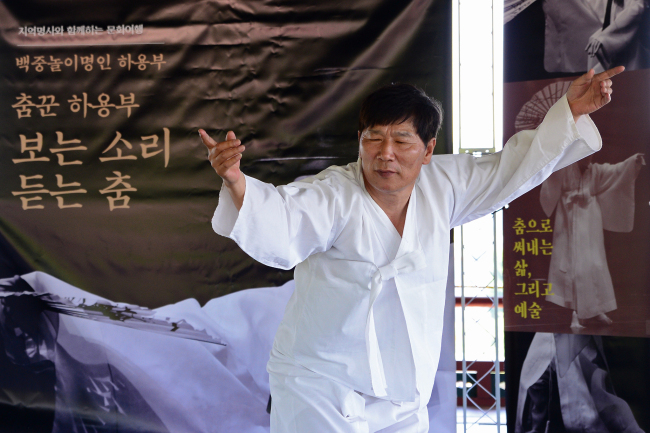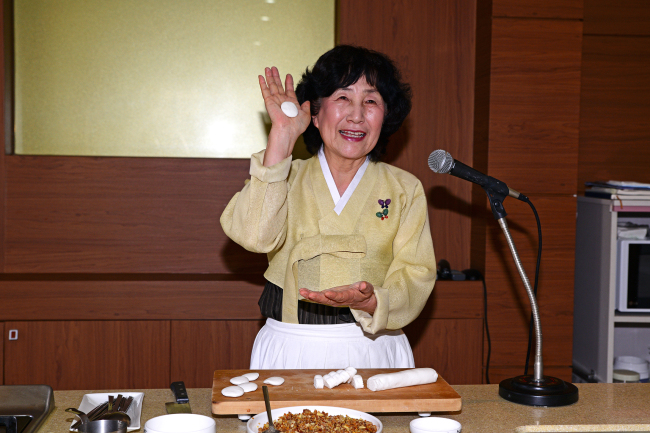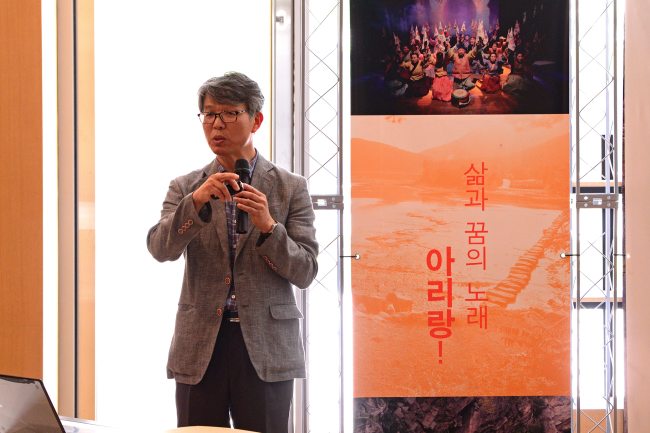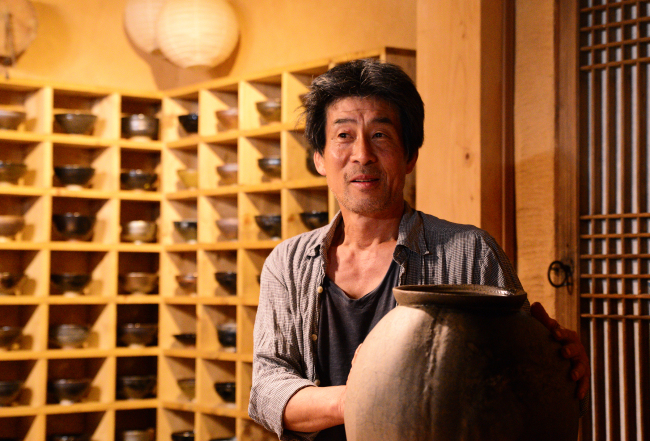Searching for inheritors of Korean cultural heritage
Tourism agencies feature programs with experts of traditional art
By Yoon Min-sikPublished : May 26, 2017 - 17:13
Korea has long boasted an abundance of beautiful scenery and rich culture. But the local tourism industry has been trying to offer something more: talented people and their stories.
Since 2015, the state-run Korea Tourism Organization has selected dozens of experts in traditional arts for tourism agencies to come up with programs. This has allowed people to experience first-hand the time-tested art and culture of the 4,000-year-old country.
The gurus are chosen for their expertise in their respective fields, which have to be long-standing traditions that represent a region.
“In the past, people would visit places to see things. We wanted to introduce a concept of having experts represent their regions, and have tourists visit them,” said Jeong Byeong-ok, executive director of KTO’s regional tourism department.
Here are some of the people selected by the authorities to represent their crafts and regions.
Since 2015, the state-run Korea Tourism Organization has selected dozens of experts in traditional arts for tourism agencies to come up with programs. This has allowed people to experience first-hand the time-tested art and culture of the 4,000-year-old country.
The gurus are chosen for their expertise in their respective fields, which have to be long-standing traditions that represent a region.
“In the past, people would visit places to see things. We wanted to introduce a concept of having experts represent their regions, and have tourists visit them,” said Jeong Byeong-ok, executive director of KTO’s regional tourism department.
Here are some of the people selected by the authorities to represent their crafts and regions.

Ha Yong-bu, traditional dancer of Miryang
The country’s southeastern region of Miryang, South Gyeongsang Province, has a rich history in terms of festivities and Miryang baekjung nori is testament to that.
The Buddhist festival features dancing, along with other traditions, and its festive spirit is embodied by the wide grin of Ha Yong-bu, a dancer designated by the state as a “human cultural asset.”
His story starts not with him, but his grandfather, Ha Bo-myung, who was a celebrated dancer. The elder Ha, who was also a “state treasure,” used to take his grandson around on his gigs. Grooving became second nature to then-5-year-old Ha.
However, he did not immediately take on dancing. An infamous troublemaker in his youth, it was not until he was approaching his late 20s that he became his grandfather’s protege.
In 1989, he met theatrical director Lee Youn-taek in an encounter that changed his life forever.
“He suggested that I should do a play with him. And I thought at first, ‘What play? I’m a dancer?’” he said. But Ha soon realized that acting and dancing were not too far off.
“I used to mimic my grandfather’s moves. But through plays, I soon learned the relationship between the sound and my movement, along with ways to express myself on stage.
He warned youths against being hung up on one’s goal.
“If you’re worried too much about a goal, then you feel like a failure once you’ve failed to achieve it. Just do what you like and eventually you will have a goal,” he said.

Jo Gui-bun, keeper of Joseon-era recipes
About 340 years ago, an elderly woman of a respected family decided to write down recipes for the Joseaon Kingdom’s traditional cuisine. She decided to write it down in hangeul, not the Chinese characters used by aristocrats, so that more people -- particularly women -- could study it.
The cooking book “Eumsik Dimibang,“ written by Jang Gye-hyang, allows readers to translate the culture and traditions of Yeongyang, North Gyeongsang Province, to delicious dishes.
Jo Gui-bun, who married into Jang’s family, is now the guardian of the recipe book, whose title roughly translates to “the way to know food.”
Jo lives in the village of her husband’s family, Jaeryeong Yis, to which renowned novelist Yi Mun-yol belongs. Yi even has a house where he stays while writing in the village.
Inside the village are museums that show the history and content of “Eumsik Dimibang,” along with a place where visitors can learn to make dishes of the traditional cuisine.
An eatery in a traditional Korean building, or hanok, serves a full course meal that offers a glimpse of what Koreans of the past enjoyed for dinner.

Jin Yong-sun, Arirang researcher of Jeongseon
Many say Arirang embodies the soul of Koreans.
The folk song, which has numerous variations across the country and even beyond, has cemented its reputation as the unofficial national anthem of Korea.
Arirang Museum, run by Jin Yong-sun, features the song’s history and its many forms.
The venue has recordings of versions of Arirang from Jeongseon, Gangwon Province, Miryang, regions in North Korea and even other countries like China and Japan.
Jin has spent his entire life traveling across the world to research the song that some Koreans associate with sadness and homesickness, and others with joy and nostalgia.
“In college, I noticed I could not fully translate the lyrics into German. It was then that I realized how beautiful and peculiar the words and rhythm of Arirang are,” he said.
For decades, Jin collected the recordings and documents related to the song. He learned that the song was first spread outside the country by American missionary Homer Hulbert and that it had been introduced to foreigners through various means such as the novel “The Living Reed” by Perl S. Buck.
Along with his study of Arirang, he has also researched the history of Korean diaspora.
Videos about their history and the song are also available at the museum.
“If you ask me where the path of Koreans end, I’ll say: It’s where ‘Arirang’ does,” he said in a previous interview.

Kim Si-yeong, pottery master of Hongcheon
When talking about Korean pottery, people usually start with the white porcelain of the Joseon era and end with the celadon of the Goryeo Kingdom. Little is known about the black porcelain that was once revered more than the famous jade-green pottery.
Kim had first learned about black porcelain during his college years. Although he got a job soon after, he quit and took on pottery as he “could not forget about the mysterious black color.”
“I hope not to be content with the color of existing black porcelain, but try to make different variations of the color,” he said.
His shop Gappyeongyo is located in Seo-myeon in Hongcheon, Gangwon Province. There, he shares the story of the porcelain, which has colors that vary depending on the temperature of the fire and the characteristics of the clay used in making the pot.
Visitors can also experience the pottery through classes run by him and his two daughters.
Kim is slated to hold an exhibition of his pots at Baegak Art Space in Jongno-gu, Seoul, from Aug. 10 to 23.
By Yoon Min-sik (minsikyoon@heraldcorp.com)







![[KH Explains] How should Korea adjust its trade defenses against Chinese EVs?](http://res.heraldm.com/phpwas/restmb_idxmake.php?idx=644&simg=/content/image/2024/04/15/20240415050562_0.jpg&u=20240415144419)











![[Today’s K-pop] Stray Kids to return soon: report](http://res.heraldm.com/phpwas/restmb_idxmake.php?idx=642&simg=/content/image/2024/04/16/20240416050713_0.jpg&u=)